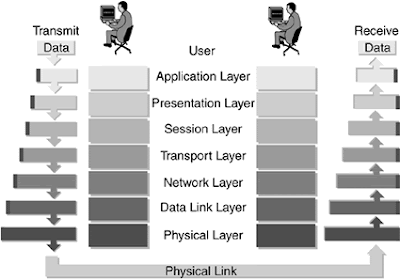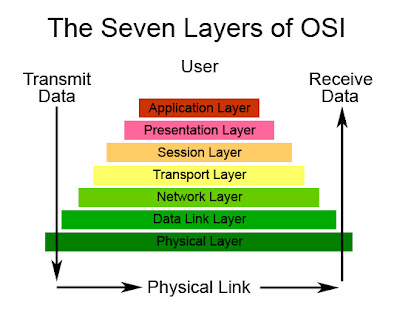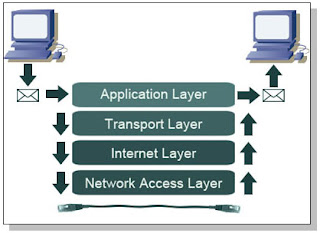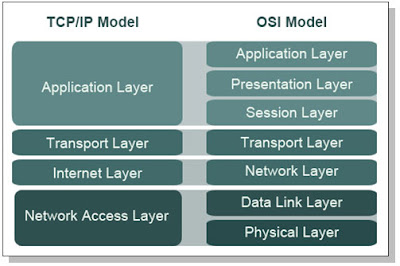Do you know how data travels when you send something to your friend over the network? What are the various layers through which your data travels? This article is to let you know about the procedure of how data travels from sender to the receiver. When transmission of data takes place over the networks, we always talk about the two Network models:- OSI (Open System Interconnection) network model and TCP/IP or
internet model. OSI model is a theoretical framework whereas TCP/IP is the actual implementation of the OSI model. TCP/IP is used in the today’s data communication.
OSI Network Model:- OSI is a seven layer network model which
is used to connect the senders and the receivers over a network. The seven different layers of OSI model are:-
- Application Layer
- Presentation Layer
- Session Layer
- Transport Layer
- Network Layer
- Data Link Layer
- Physical Layer
Let me give you an example:- Let us assume that you want to send a letter to your friend. First of all you will write a letter then put it in the mailbox. The postman will pick the letter from the mailbox and send it to the post office from where it will be carried by a carrier . The carrier will transfer the letter to the post office from where it will be sent to the mailbox and then the receiver of that letter will receive the letter from the mailbox and open it. So the task is divided in the layers and every layer is depended on its previous and
immediate layer. The OSI model works on the same principle which we are going to discuss.
Data Transmission through OSI Model:- The working of each of the 7 layers of OSI network model will be discussed in the next article.
The data travels vertically through the seven layers of the OSI model. At each layer, data is being added by that respective layer in the form of headers or trailers and is being stripped by their peer layers in the receiver side.
1. Each layer can communicates with the layers above and
below of it and can also communicates with its peer layer in the receiving
side.
2. First of all the data travels from the application layer
and travels downward through all layers and reach to their destination.
3. At each layer, the data is being encapsulated with the
data of the layer in the form of header ,contains protocols, which enables the
communication.
4. The original data with the headers of the previous layers
is moved to the next layer.
5. When the data reaches the physical layer then it gets
transferred by different media or network topologies from
sender to the receiver.
6. On receiver side, the data is received by the physical
layer and is being sent again through the seven layers of the OSI model in the
reverse direction.
7. Each layer strips the header of the data which was added
by its peer layer in the sender side.
TCP/IP Model:- OSI model is the reference model whereas TCP/IP
is the actual or implementation of the OSI model of the network. It consists of
four layers namely Application layer, Transport Layer, Internet Layer and Network Access Layer.
If we compare TCP/IP model with the OSI model, we can say
that the application layer of TCP/IP model is equivalent to the first three
layers of OSI model (application, presentation and session), Transport layer is
doing the function of transport layer of OSI model, Internet layer is the
Network layer of OSI model and Network access layer is doing the function of
Data Link layer and the Physical layer of the OSI model.
Credits: Yuvraj Salaria




